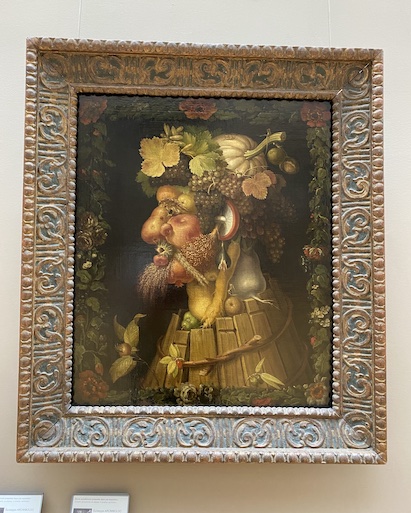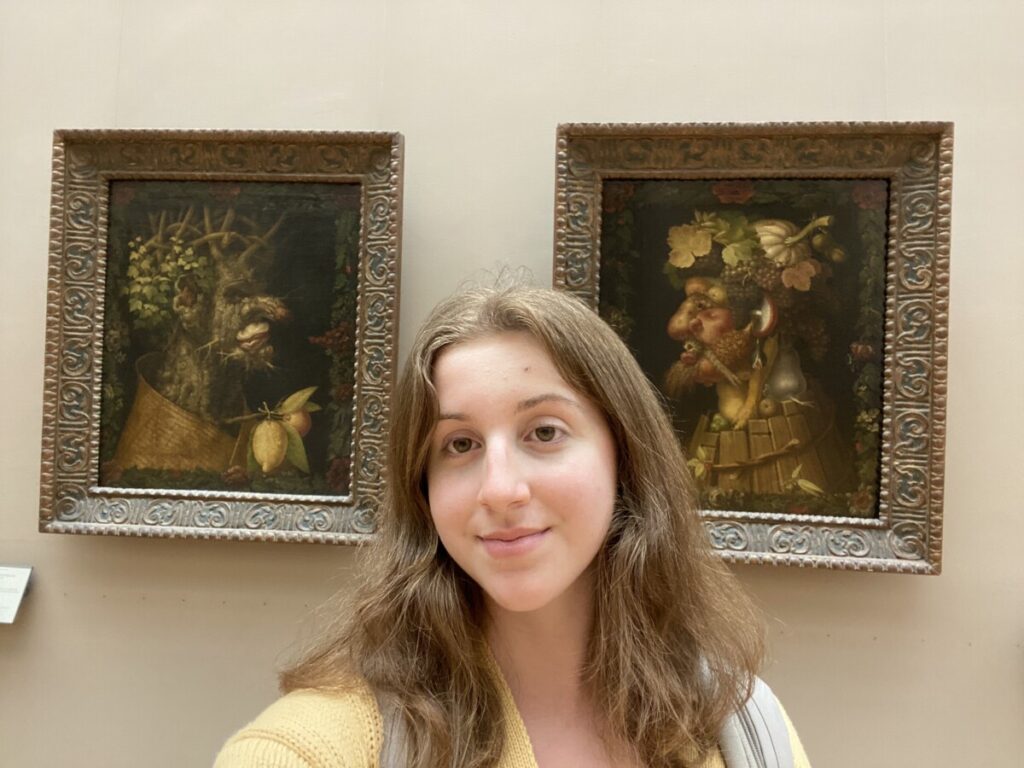No trip to Paris would be complete without a visit to Museé de Louvre. The world’s most visited museum is housed in the beautiful 13th century Louvre Palace. It was fascinating to appreciate art in a space that was so illustrious, with the ceilings vying for equal attention to the paintings on the walls. Despite visiting on the day that the Mona Lisa was smeared with cake, my friend and I unfortunately did not bear witness to the protest (nor were we involved, no worries). We remained in the museum until closing, and still felt that we only scratched the surface of all there was to explore.
On our way out, four particular paintings caught my attention. Known collectively as The Four Seasons, these works were produced in the 14th century by Giuseppe Arcimboldo. Each one depicts a portrait composed of fruit, vegetables, and plants that relate to the respective season. Autumn represents a man but his neck is made up of pears, his chin is a pomegranate, and his ears are mushrooms. I stood there wondering why it was so familiar, and then I remembered we learned about object recognition in NBB302. Propagnosia, also known as facial blindness, is an impairment in the visual recognition of faces. Normally, faces are processed holistically but lesions in the occipital region in the ventral pathway (known as the fusiform face area) causes face blindness (Haeger et al, 2021).

Arcimboldo’s paintings have actually been used in previous studies to observe this phenomenon. In a 2011 study, these paintings were shown to individuals with propagnosia (Rossion et al, 2011). To an unimpaired human, the elements of the painting can collectively be viewed as a face due to the object configuration. However, those with deficits in the FFA are able to only recognize the discrete components of the painting, in this case the individual fruits and vegetables. It was interesting to make this connection and it helped me more deeply understand the studies we were talking about by being able to view the stimuli in person myself.

References:
Haeger, A., Pouzat, C., Luecken, V., N’diaye, K., Elger, C., Kennerknecht, I., … & Dinkelacker, V. (2021). Face Processing in Developmental Prosopagnosia: Altered Neural Representations in the Fusiform Face Area. Frontiers in behavioral neuroscience, 15.
Rossion, B., Dricot, L., Goebel, R., & Busigny, T. (2011). Holistic face categorization in higher order visual areas of the normal and prosopagnosic brain: toward a non-hierarchical view of face perception. Frontiers in human neuroscience, 4, 225.
